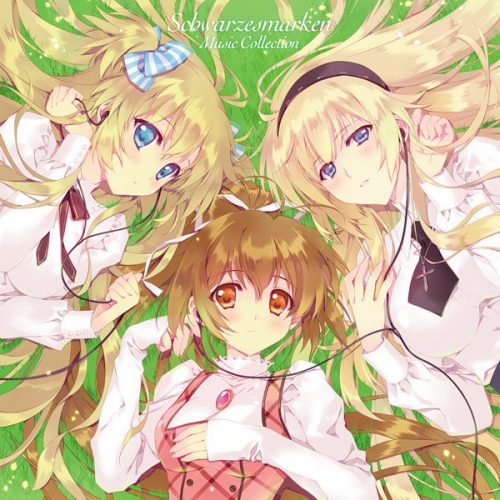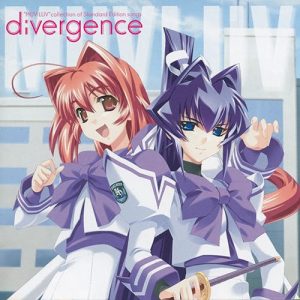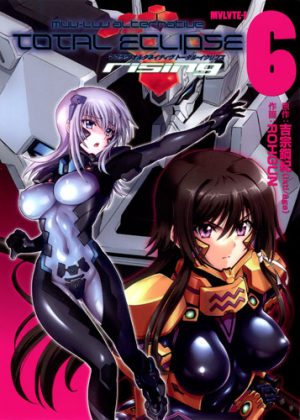
Alternative’s story is built from context. From its roots rise a mountain of ideas, continually growing as you walk to its peak. The incline doesn’t feel steep, your feet firmly grounded in its ideas as you pace towards the top. After what feels like a lifelong journey filled with tragedy, heartbreak, and loss, you’re finally at the end. Finally, atop the mountain, you can see the world around you, your perspective changed forever.
The Muv-Luv trilogy is layered. Its ideas permeate through its tale through historical parallels, the deconstruction of genres, the development of caricatures into real people, and the emotional bonds built through adversity and love.
So much of Muv-Luv Alternative is a personal journey that I struggle to convey. Thus, I will dedicate several articles to Alternative. This article will prime your memory, reminding you of plot details and show how Alternative builds meaning from history. By doing so, I hope to slowly show how Muv-Luv reveals its purposeful writing.
The Invasion of the BETA: the Loss of a Generation
For the most part, much of Muv-Luv’s history borrows from our own world. However, due to the invasion of the BETA, Alternative’s history begins to shift.
The first sighting of the BETA was on Mars in 1958. During an expedition, rovers make contact with unidentified beings, managing to send blurry photos before being destroyed. In 1967 the BETA are seen on the moon, finally making their descent on Earth in 1973. From Kashgar, their landing point, they quickly took over Eurasia, devastating multiple nations including America’s Cold War opponent, the USSR.
In 1998, the BETA invaded Japan. In just 1 week, 36 million citizens were massacred, effectively ruining Japan’s military. Seeing the catastrophe that followed, the very moment the BETA’s hives (a mobile nest) appear in neighboring countries, America bombs them, successfully preventing a BETA invasion into the United States. From this point onwards, the US is the only superpower isolated from direct conflict, a fact that garners intense disdain from its allies.
In 1999, Operation Lucifer begins. In a united effort to retake Japan, humanity assaults the BETA’s hive at Yokohama. It was here, against massive outcry, that America tested a new weapon: the G-bomb. Alluding to the atomic bombing of Nagasaki and Hiroshima, America drops two G-bombs on Yokohama, annihilating the hive but permanently damaging the environment for years to come.
It was with this that the political struggle between Japan, the UN, and America emerge. It is with this that both our history and Alternative’s history start to blur.
Blurring History: Explaining Alternative’s Mindset and the Ties to Real Events
By October 22, 2001, the start of Muv-Luv: Alternative, the world’s population has been reduced to a mere 1 billion. In desperation, Japan’s drafting age has been lowered, forcing even high school students into the war. An evident thought occurs:
Alternative’s harsh setting is molded by war. As a result, nationalistic and Cold War mentalities still persist. Key events that happened in our history are different from Alternative’s.
Before the start of Alternative, Japan never experienced these World War II events: the bombing of Hiroshima and Nagasaki, the unconditional surrender of Japan, their later occupation by the US, and the famous “Humanity Declaration” by Japan’s longest-reigning emperor, Hirohito.
By proximity, Alternative’s America didn’t experience those events alongside 30 more years of the Cold War. Going unchallenged as a superpower, America’s strategy of bombing its enemies didn’t have the same consequences of our time: the fear of nuclear retaliation.
However, in its place was a new fear, its claws inching ever closer. To defend its borders, America has a shaky relationship with the UN and Imperial Japan, America’s allies at the war front. If they fall, a different “iron curtain” will close upon the world.
Just as in our Cold War, America escalates an arms race, forcing every nation to adjust or fall in political influence. However, instead of creating mechs geared towards fighting the BETA, America focuses on mechs with anti-mech capabilities. Other countries--by necessity--develop mechs geared towards anti-BETA warfare. The reasons are implied when America uses Cold War tactics to instigate a proxy war: a Japanese civil war.
This civil war marks the cast’s first official mission. Distraught at the idea of fighting Japanese citizens, this event signals a major transition from Japan’s nationalism to patriotism.
This Japanese civil war, later (purposefully) deemed the 12/5 incident, is a coup d'état of the Japanese Shogunate. This event was sparked by the growing disdain of the UN occupation of Japan, the increased presence of American troops, the unfair treatment of its Japanese civilians (especially the failed rescue of the Mount Tengen villagers--falsely promoted with propaganda as a success), and the forceful policies of corrupt Japanese politicians promoted falsely in the name of the Shogun.
We later learn that this event is backed by the CIA. In an attempt to gain leverage for “saving Japan,” the CIA covertly empowers the rebel forces in hopes of occupying Japan during its aftermath, a tactic very akin to Cold War strategies.
The Importance of the 12/5 Incident: Obstacles of the Story, Character, and Writer
Before continuing, it’s necessary to understand the importance of the 12/5 Incident.
First, it is a logical obstacle. The only way for humanity to overcome the BETA is through a cooperative effort. However, even in the face of extinction, humans fight amongst themselves. This event is a prerequisite. Before humans can hope to win, they must become united.
Second, it escalates the war to a personal level. Multiple characters have relationships with people they fight or see die. This initiates a new set of character arcs, developing the cast as they seek personal reasons for their fight. This greatly influences later events, a topic I’ll discuss in a later article.
Lastly, due to historical concerns, the 12/5 incident is an obstacle for the writers. In an interview with Koki Yoshimune, the main writer of the Muv-Luv series, he states:
“After the release of Muv-Luv, it still took 3 years to complete Muv-Luv Alternative. The main reason was we had to rewrite the scenario a number of times. You may ask, why? This is because in Japan, harmonizing the contents of the game with recent events is very sensitive… during those 3 years of development. Major earthquakes, tsunamis, and an anti-Japan movement in China forced us to change the scenario.”
To put it lightly, the 2005 anti-Japanese demonstrations in East Asia were influenced by historical concerns. In order to not be misconstrued as promoting nationalism, Alternative was written very carefully to avoid this interpretation.
Divisions Between Duty and Feelings
The 12/5 Incident is when characters are challenged, their very purpose questioned as the people they love are dying. Some war stories would use this opportunity to “harden” its characters. Make them unfeeling and by extension ready to take on the harsh realities of war. It’s in these stories that a soldier must be willing to cauterize their wounds (emotions) just to survive. Crying is an indulgence ill-received.
However, Muv-Luv isn’t that story. Central to its message is love, and love is the origin of romance—how the story moves from Extra to Unlimited to Alternative and finally to Extra once more. It is with this context that we can examine the 12/5 Incident, an event that brings people closer towards Muv-Luv’s roots.
When the reader gets deep into the Japanese civil war, they see fighting between the rebels and the American forces. An “us vs them” mentality is established through brief dialogue. Using the 2017 Steam Edition’s translation, we’ll analyze the following scenes.
As US forces enter the scene, an American pilot demands the rebel forces “follow UN military protocol and transmit in English.” The rebels respond in Japanese, “You are interfering in Japanese national affairs. Cease all combat operations immediately.”
The US pilots literally cannot understand the rebels, and negotiations break down as the rebels transmit, “Attention, American craft: English can eat shit.” The rebels give the proverbial middle finger, “What are you cowards doing back in Japan? Did you drop something on your way out the door!?”
Nationalistic sentiments flare, a reminder to the reader: America abandoned the Japanese in the initial wave of BETA. The flames of hatred are stoked, and fighting recommences. Fast forward, the main cast is rushing back to base with the Shogun, Yuuhi, Meiya’s twin sister. As they fly back to base, they are intercepted by Sagiri, the leader of the rebels.
The rebels want their demands met by the Shogun, and out of respect and necessity—harming the Shogun would paint them as evil in Japan’s eyes—a 1-hour ceasefire is agreed upon. It is through this break that the writers shift gears. Within this section, the writers lay the groundwork: to create unity through “humanity.”
The American escort were refugees from countries destroyed by the BETA. America became a safe haven, giving citizenship in exchange for military participation. Due to this, the American soldiers feel a sense of duty towards their country and empathy for the young cast. With this knowledge, the readers and cast can relate to the American soldiers. Both are in the same position, between conflict, divided by emotion and duty.
With this, the writers have prevented the audience “othering” the Americans. The next step is harder: to connect the Japanese rebels and the rest of Japan--to end the civil war. However, to end this peacefully--without resentment--would take an act of god.
Cue the spotlights for Meiya, a representative of royalty, the UN, and mankind.
Final Thoughts

The scope of Muv-Luv: Alternative is gigantic, warranting multiple articles to cover its material. Information compiles heavily, snowballing as you go further into the story. With plot details contextualized, the next article will talk further about how the 12/5 Incident centers around historical concerns. Through this, characters develop further, influencing later major events.
Recommended Post
A Retrospective Reading: Muv-Luv in 2019 Part 1
Recommended Post
A Retrospective Reading: Muv-Luv in 2019 Part 2
Recommended Post
A Retrospective Reading: Muv-Luv in 2019 Part 4
Recommended Post
A Retrospective Reading: Muv-Luv in 2019 Part 5
Recommended Post







